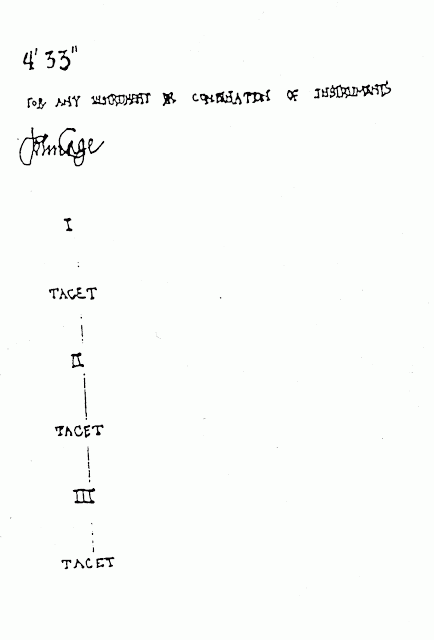 |
| Brian Peter George St. John le Baptiste de la Salle Eno, looking far more sensible than his glam heyday. |
Our foundations readings continue with a few more readings from the musical sphere, which, nonetheless, have useful implications for the sorts of poetic investigations we'll be doing this semester.
We begin with Brian Eno, a groundbreaking (non-)musician and producer who's worked with the likes of David Bowie, Devo, Talking Heads, and U2, and is perhaps best known as an innovator and originator of ambient music, which draws heavily from the ideologies of John Cage. Below you'll find two masterpieces of the genre, along with their liner notes, which provide a surprisingly succinct explanation of the ideas behind these works. Read the notes and take a few minutes to listen to a little of each piece (or better still, leave them running in the background as you do your other readings, brush your teeth, do laundry, etc.):
I'd also like you to read Eno's germinal 1979 essay,
"The Studio as Compositional Tool," which speaks directly to the challenges and advantages of working objectively and transformatively with creative materials in a hands-on fashion, and provides some useful contexts for the development of the practices that we now take for granted.
 |
| Pierre Schaeffer in the studio. |
From there, we'll move on to Pierre Schaeffer (1910–1995), whose ideas we've already encountered in Michel Chion's writings on reduced listening. Schaeffer's pivotal works emerged from his employment at Radiodiffusion Française (the French national television and radio network) in the postwar era, where he engineered and hosted radio programs and composed music for the air. He's credited as the father of musique concrète, the precursor to contemporary sample-based musics from hip-hop to plunderphonics to mashup culture, in which acousmatic materials (i.e. prerecorded sounds divorced from their sources and semantics) are edited, manipulated and collaged to create new sounds. Etude aux chemins de fer (Study of the railroads), composed in 1948, is his first major breakthrough in this genre:
For Monday I'd like to to read
a few excerpts from his In Search of a Concrete Music, first published in France in 1952, but not available in an English-language translation until 2012. I've assembled a few entries from chapter 2 of his "First Journal of Concrete Music" (1948–1949) along with chapters 3 and 5, and for the sake of continuity, I've kept longer passages, rather than chop out little key bits. There's a lot of discussion here that might be oblique (especially references to composers/pieces that you're not familiar with) and it's okay to overlook those. Mostly, I want you to focus on the bigger picture ideas relating to practice and form.

